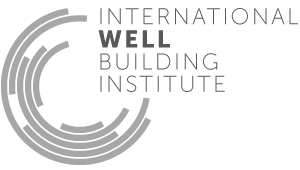Pest control
- 1 Air quality standards
- 2 Smoking ban
- 3 Ventilation effectiveness
- 4 VOC reduction
- 5 Air filtration
- 6 Microbe and mold control
- 7 Construction pollution management
- 8 Healthy entrance
- 9 Cleaning protocol
- 10 Pesticide management
- 11 Fundamental material safety
- 12 Moisture management
- 13 Air flush
- 14 Air infiltration management
- 15 Increased ventilation
- 16 Humidity control
- 17 Direct source ventilation
- 18 Air quality monitoring and feedback
- 19 Operable windows
- 20 Outdoor air systems
- 21 Displacement ventilation
- 22 Pest control
- 23 Advanced air purification
- 24 Combustion minimization
- 25 Toxic material reduction
- 26 Enhanced material safety
- 27 Antimicrobial surfaces
- 28 Cleanable environment
- 208 Injury prevention
22. Pest control
To minimize allergenic pests, this feature requires that pest inspections be conducted regularly, food be stored and sealed and furniture be covered in washable covers.
Part 1: Equipment and Cleaning Agents
All cleaning equipment meets the following:
a.23 Mops, rags and dusters used to clean all non-porous surfaces consist of microfiber with a denier no higher than 1.0.
b.24 Cleaning products are certified by either the EPA's Design for the Environment, Underwriters Laboratories' EcoLogo or Green Seal.
c.23 Mops are hands-free.
d.40 Vacuum cleaners contain filters with a HEPA rating.
e. Mobile UV cleaning devices have an output of at least 4 mW/cm_ and are used as recommended by the manufacturer.
Part 2: Pest Inspection
During every WELL Commissioning, a thorough inspection is performed to ensure that there are none of the following:
a. Signs of infestation by cockroaches, termites or other pests.

Immune
Respiratory
Applicability Matrix
| Core & Shell | Tenant Improvement | New Construction | |
|---|---|---|---|
| Part 1: Equipment and Cleaning Agents | - | O | O |
| Part 2: Pest Inspection | - | O | O |
| Commercial Kitchen | Schools | Multifamily Residential | Restaurant | Retail | |
|---|---|---|---|---|---|
| Part 1: Equipment and Cleaning Agents | O | O | O | O | O |
| Part 2: Pest Inspection | P | P | O | P | O |
Verification Methods Matrix
| Letters of Assurance | Annotated Documents | On-Site Checks | |
|---|---|---|---|
|
PART 1 (Protocol) Equipment and Cleaning Agents |
Operations Schedule | ||
|
PART 2 (Performance) Pest Inspection |
Auditor Inspection |
